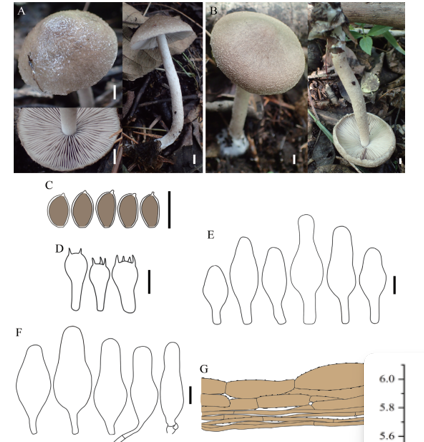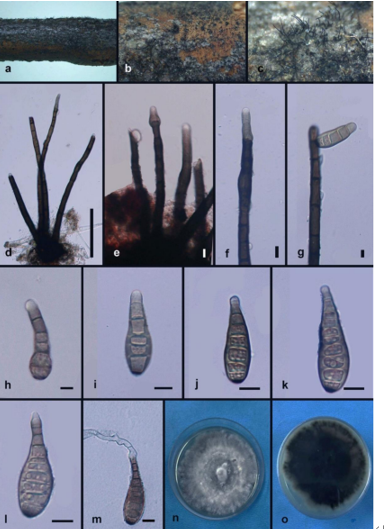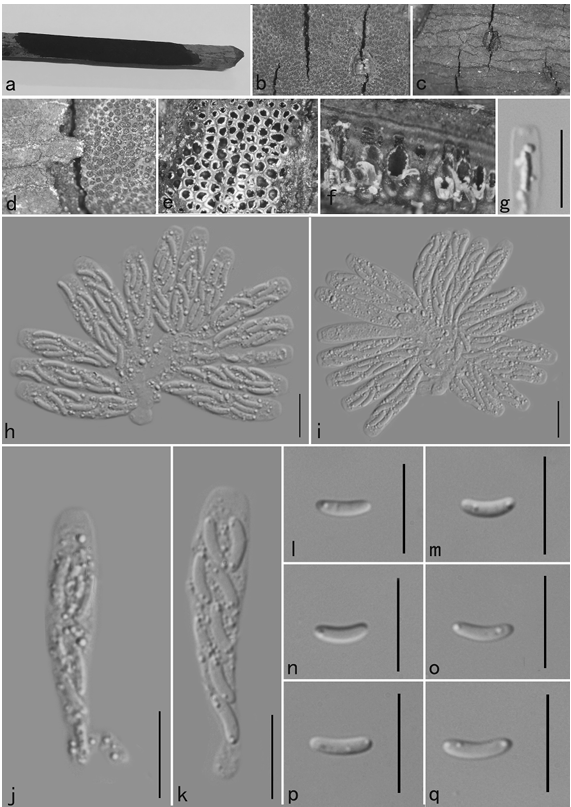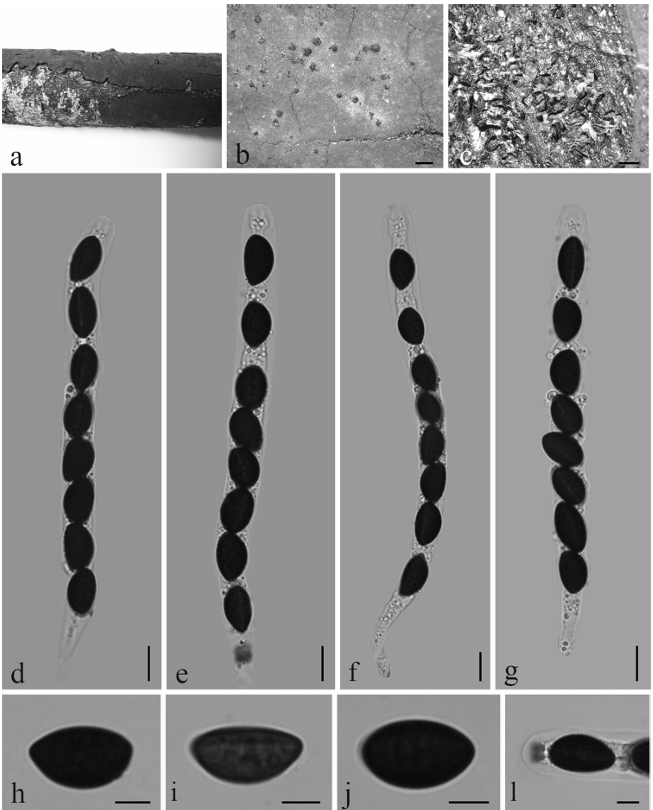Trichoderma zelobreve Jing Z. Sun & X.Z. Liu, sp. nov.2020
MycoBank No: 833236
Holotype China. Chaoyang District, Beijing, 40°0'41"N, 116°23'37"E, ca. 35 m elev., 19 Oct 2018, isolated from soil, Jing Z. Sun (HMAS 248254, holotype), ex-type culture CGMCC 3.19695.
Morphological description
On CMD after 72 h, colony radius covering the plate at 25 °C and 30 °C, 11–12 mm at 35 °C. Colony hyaline, indistinctly radial; Aerial inconspicuous. No diffusing pigment, not distinct odor (Fig. 5B). Conidial production noted after 5 days, starting around the original inoculum. Small pustules formed at the colony margin, first white, olivaceous after 6 d, with hairs protruding beyond the surface. Chlamydospores unobserved.
On PDA after 72 h, colony radius 55–58 mm at 25 °C, covering the plate at 30 °C, 8–9 mm at 35 °C. Colony white to yellow-white; mycelium dense and radial. Aerial conspicuous. No diffusing pigment, not distinct odor (Fig. 5A). Conidial production noted after 3 days, starting around the inoculum, effuse in the aerial hyphae, first white, turning green after 4 d. Chlamydospores unobserved.
On SNA after 72 h, colony radius 62–63 mm at 25 °C, covering the plate at 30 °C, 7–8 mm at 35 °C. Colony hyaline, regularly circular; mycelium loose. Aerial conspicuous. No diffusing pigment, not distinct odor (Fig. 5A). Conidial production noted after 2 days, starting around the inoculum, effuse in the aerial hyphae. Small pustules formed along with two concentric rings, first white, turning yellow-green after 3 d, with hairs protruding beyond the surface. Conidiophores pyramidal with opposing branches, the distance between branches relatively large (Fig. 5F). Phialides, sometimes solitary, often paired or in whorls of 2–3 (Fig. 5F); whorls typically cruciate but often nearly verticillate; rarely conidiophores nodose and phialides disposed in more or less botryose clusters (Fig. 5G, H). Phialides ampulliform to lageniform, often constricted below the tip to form a narrow neck, hyaline (Fig. 5G, H, I), (3.5–)4.0–6.0(–7.0) × (2.2–)2.6–3.2(–3.5) µm ‒(x = 4.8× 2.9 µm, n = 30), length/width ratio (1.1–)1.4– 2.1(–2.5) (‒x = 1.5, n = 30), base 1.4–2.1 µm ‒(x = 1.7 µm). Conidia ovoid to subglobose, smooth, hyaline when young, becoming green to dark green with age, (2.0–)2.3– 2.6(–2.9) × (1.5–)1.8–2.2(–2.5) µm ‒(x = 2.4 × 2.0 µm, n = 30), length/width ratio (0.8–)1.1–1.4(–1.7) (‒x = 1.2, n = 30) (Fig. 5J). Chlamydospores unobserved.
Habitat:soil
Distribution: China.
GenBank Accession: ITS MN594474、MN594475 RPB2MN605872、MN605873 TEF1-aMN605883、MN605884
Notes: Characterized by tree-like conidiophores, branches paired or in whorls of 3–4, ampulliform to lageniform (4.0–6.0 × 2.6–3.2 µm), ovoid to subglobose conidia (2.2–2.6 × 1.8–2.2 µm). Differs from Trichoderma breve by shorter phialides and smaller conidia, as well as the cultural characteristics and growth rates.
Reference: Gu X, Wang R, Sun Q, Wu B, Sun J-Z (2020) Four new species of Trichoderma in the Harzianum clade from northern China. MycoKeys 73: 109–132. https://doi.org/10.3897/mycokeys.73.51424
Figure5. Trichoderma zelobreve (CGMCC 3.19695). Cultures at 25 °C after 3 days (A on PDA B on CMD C on SNA) D conidiation pustules on CMD after 10 days E conidiation pustules on SNA after 10 d F conidiophores G, I conidiophores and phialides H phialides with conidia J conidia. Scale bars: 25 µm (F); 10 µm (G–J).









